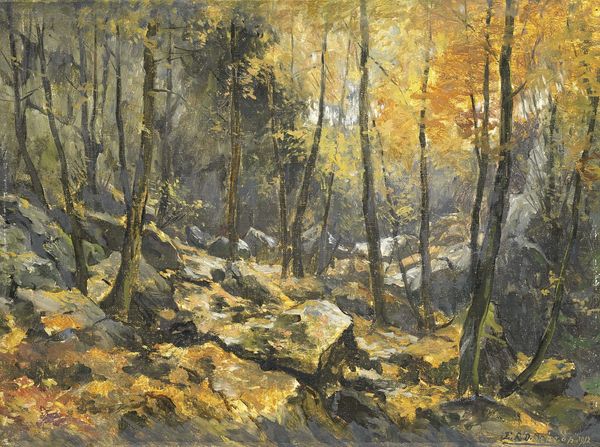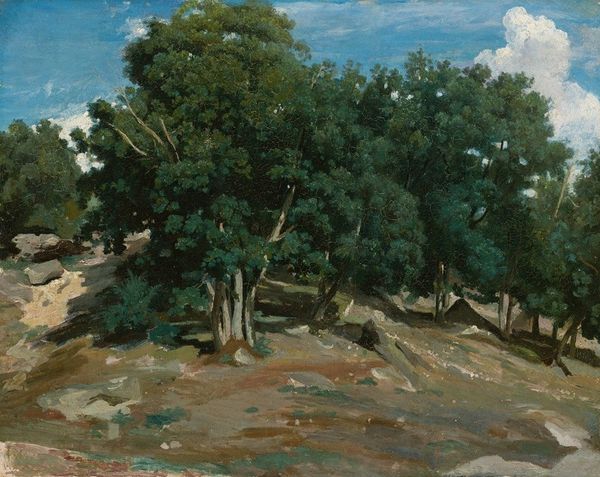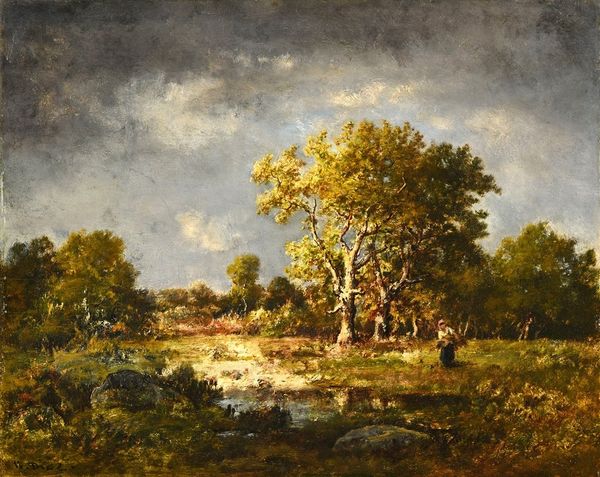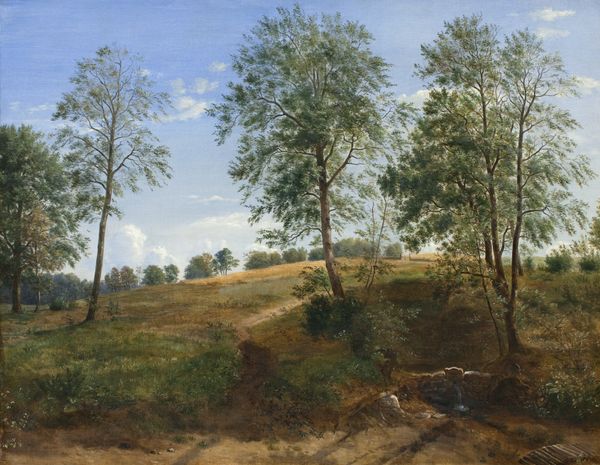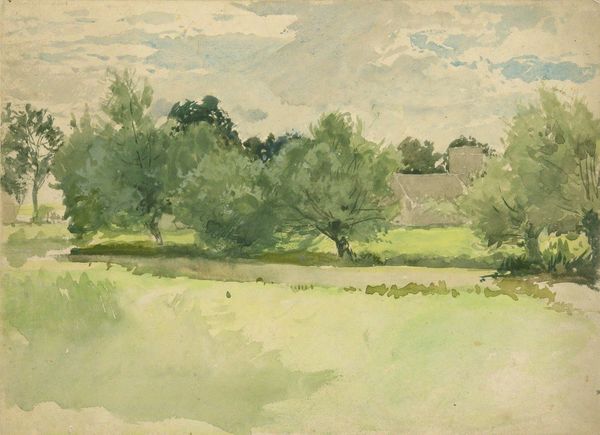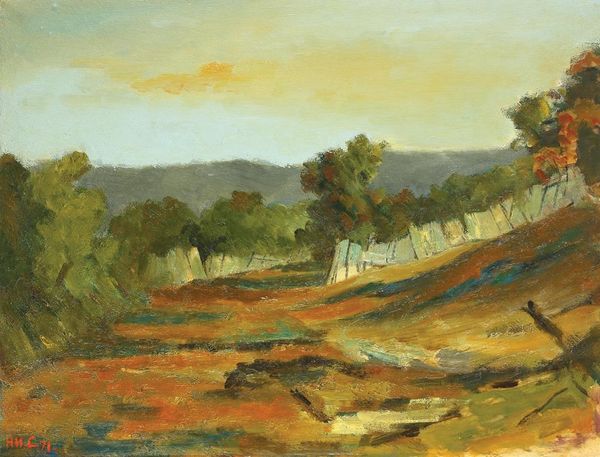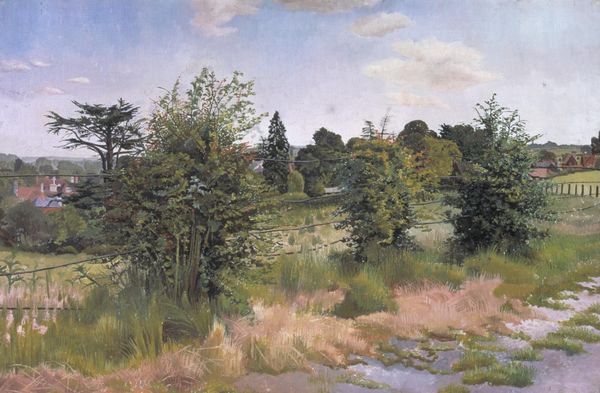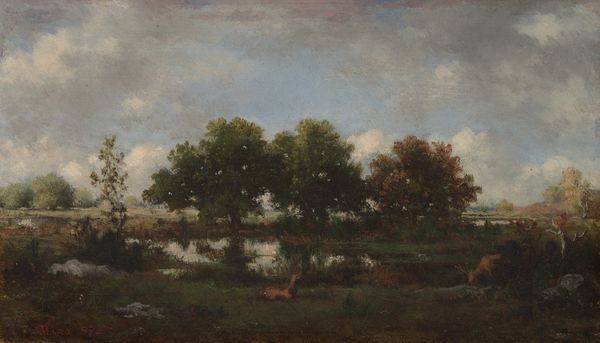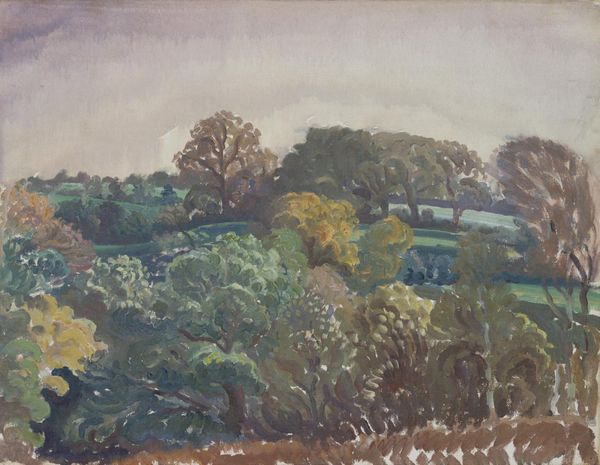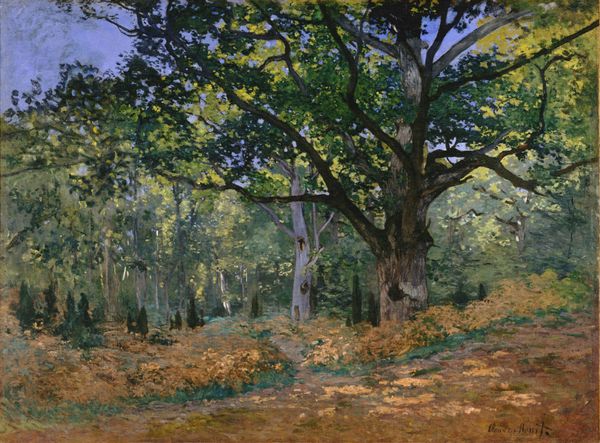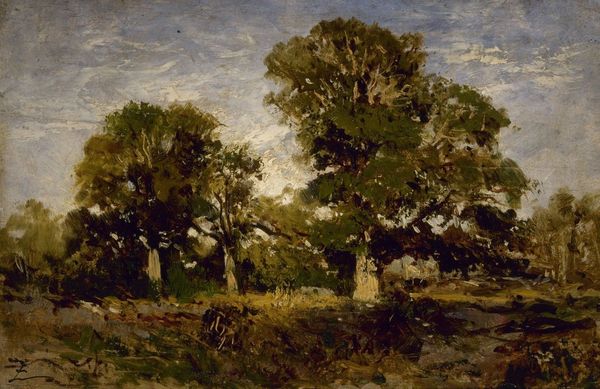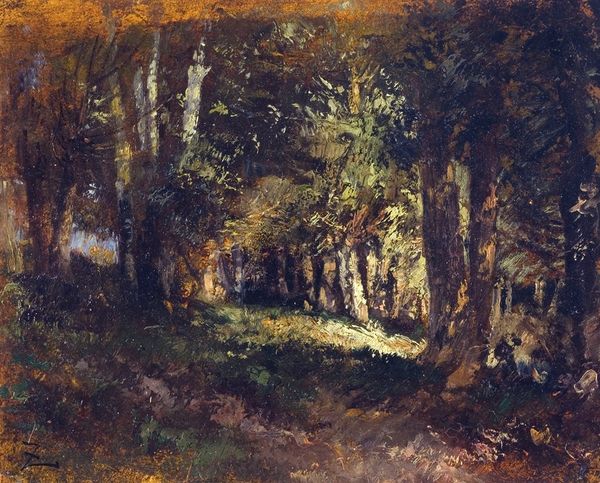
painting, plein-air, oil-paint, impasto
#
painting
#
impressionism
#
plein-air
#
oil-paint
#
landscape
#
impressionist landscape
#
oil painting
#
impasto
Copyright: Public Domain: Artvee
Editor: So, this is "Lisière de la forêt de Fontainebleau," painted by Alfred Sisley around 1865, using oil paints. I'm struck by how muted the colors are, almost autumnal, even though it's a landscape. It evokes a feeling of stillness. What do you see in this piece? Curator: I see a fascinating dialogue between presence and absence. The edge of the forest is literally a "lisiere" – a boundary, a hemline. The trees themselves, though rendered with delicate brushstrokes, form a kind of visual barrier. Consider the cultural memory embedded in forests – places of mystery, transformation, and potential danger in folklore. Editor: That’s interesting. I was so focused on the colours and the overall calmness of the scene that I didn’t consider any sense of… unease. Curator: Exactly. And the rocks in the foreground? Are they simply geological features, or do they symbolize something more? Perhaps the weight of time, the endurance of nature against the fleeting quality of human experience. Notice how they are placed almost as sentinels, guarding the entrance to this liminal space. Does that resonate with the period? Editor: I hadn’t considered it that way at all. Thinking of the rocks as sentinels protecting the secrets within... Wow. It feels like this peaceful landscape has a deeper story, almost like a dream. It makes the boundary between the visible and the invisible a very potent space. Curator: Precisely. Sisley, through his carefully chosen imagery, invites us to contemplate not just what is seen, but also what lies hidden just beyond the surface. Do you find this enhances your appreciation of the painting? Editor: Absolutely. I now see a painting that holds multiple layers, suggesting narratives about nature and memory. Thanks!
Comments
No comments
Be the first to comment and join the conversation on the ultimate creative platform.

